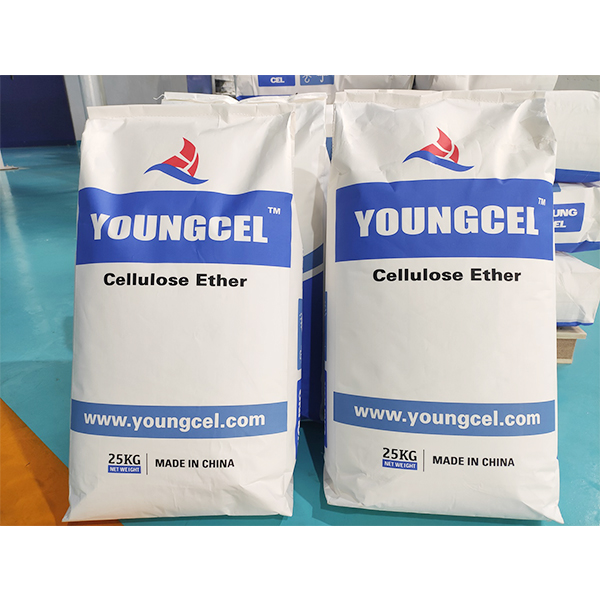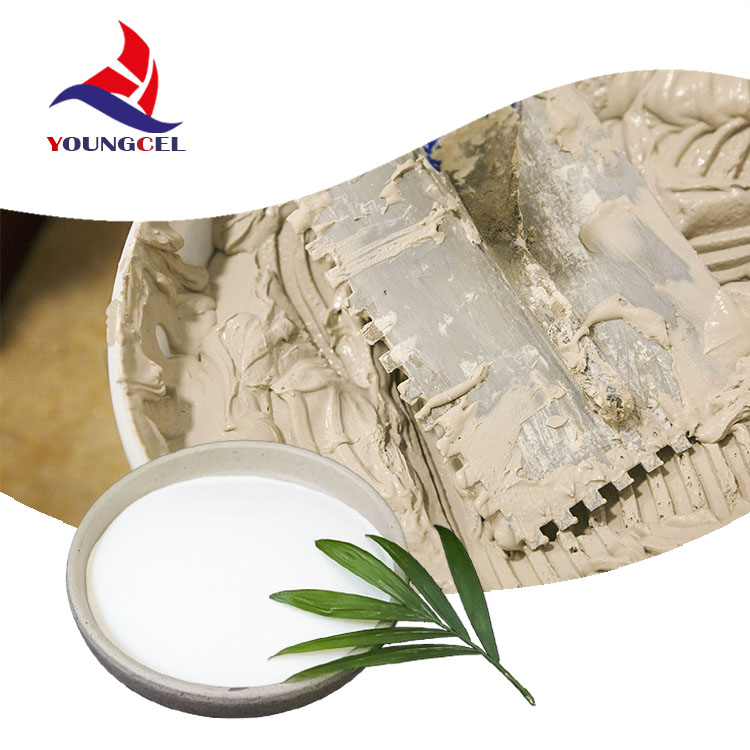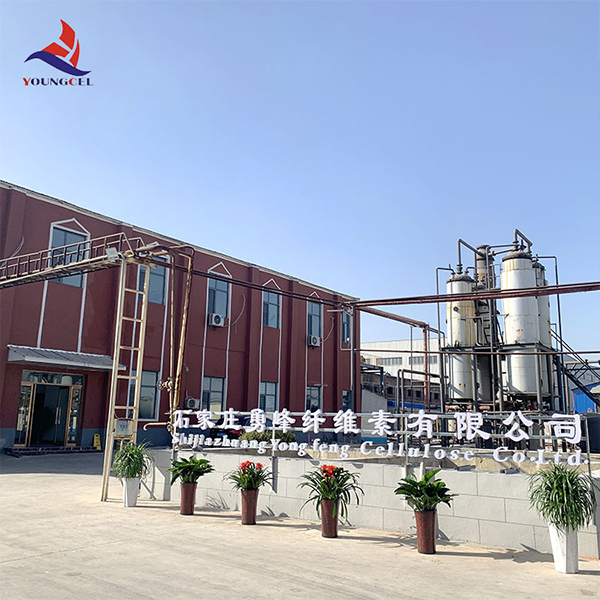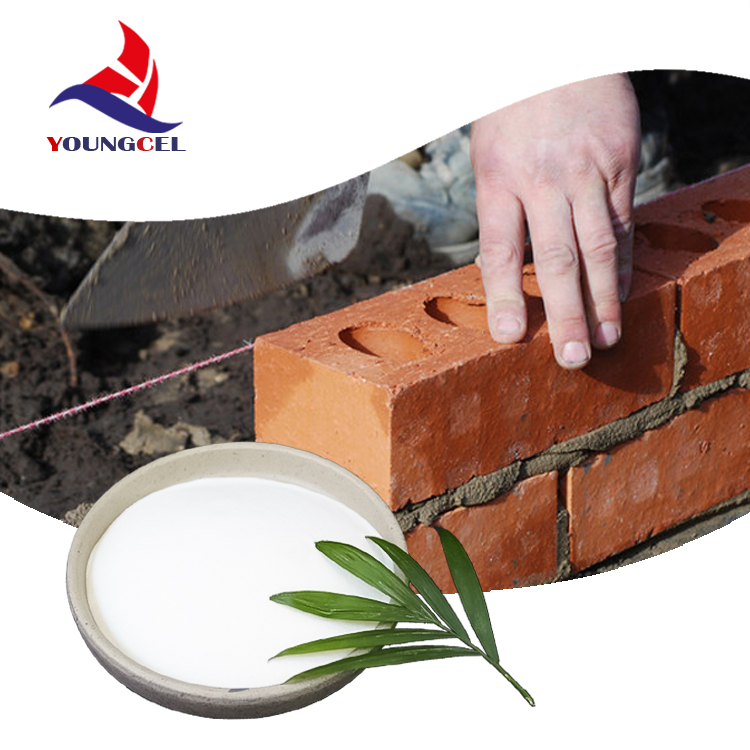Leveraging Advanced Cellulose Ether for Superior Construction Performance
The modern construction industry demands materials that not only meet stringent performance criteria but also contribute to efficiency, durability, and sustainability. A critical component enabling these advancements is Chemical Additive Cellulose HPMC for Construction. Hydroxypropyl Methylcellulose (HPMC) is a versatile, non-ionic cellulose ether derived from natural cellulose, widely recognized for its pivotal role in enhancing the properties of various cement-based and gypsum-based building materials. Its ability to improve water retention, consistency, workability, and adhesion makes it indispensable in contemporary construction applications, from tile adhesives to self-leveling compounds.
Manufacturing Process Flow of Hydroxypropyl Methylcellulose (HPMC)
The production of Chemical Additive Cellulose HPMC for Construction involves a sophisticated chemical process that transforms refined cotton linter or wood pulp into a highly functional polymer. This process ensures consistent quality and tailored performance characteristics essential for construction applications.
Key Steps in HPMC Manufacturing:
- Raw Material Preparation: High-purity cellulose (typically cotton linter or refined wood pulp) is selected. These materials are chosen for their consistent molecular structure and low impurity content, ensuring the final product's performance stability.
- Alkalization: The cellulose is immersed in an alkaline solution, typically sodium hydroxide, to swell the cellulose fibers and convert them into alkali cellulose. This step activates the cellulose, making it more reactive for subsequent etherification. This process is often conducted in a reactor under controlled temperature and pressure.
- Etherification: The alkali cellulose is then reacted with methyl chloride and propylene oxide in a controlled environment, typically a jacketed reactor. This is the core chemical reaction where methyl and hydroxypropyl groups are introduced onto the cellulose backbone, forming HPMC. The degree of substitution (DS) and molar substitution (MS) are precisely controlled here, defining the final HPMC's properties like viscosity, gelation temperature, and solubility.
- Neutralization and Washing: After etherification, the crude HPMC is neutralized to remove residual alkali and then thoroughly washed with hot water. This washing process is critical to remove byproducts (e.g., NaCl, propylene glycol) and unreacted raw materials, ensuring product purity. The washing efficiency directly impacts the ash content and clarity of the final HPMC solution.
- Drying and Grinding: The purified HPMC slurry is dewatered and then dried, typically using flash dryers or spray dryers, to reduce moisture content to specified levels. The dried HPMC is then ground into a fine powder, and often sieved, to achieve the desired particle size distribution. Particle size is crucial for dissolution rate and workability in construction mixes.
- Quality Control and Packaging: The final product undergoes rigorous quality control testing, adhering to standards like ISO 9001 for manufacturing processes and specific ASTM/EN standards for material properties such as viscosity, water retention, and dissolution time. After passing all tests, the HPMC is packaged in moisture-proof bags for distribution.
Target industries for high-quality HPMC include general construction, civil engineering, and specialized applications within infrastructure development. Advantages in typical application scenarios include enhanced energy saving through improved insulation materials and superior corrosion resistance in coatings due to better film formation properties.

Industry Trends and Market Dynamics
The global construction chemicals market, projected to reach over $70 billion by 2027, is experiencing robust growth, primarily driven by increasing urbanization, infrastructure development, and a growing emphasis on sustainable and high-performance building materials. Within this market, Chemical Additive Cellulose HPMC for Construction plays an increasingly vital role. Key trends include:
- Sustainability and Green Building: A growing demand for environmentally friendly building materials is pushing manufacturers to develop HPMC grades that are more efficiently produced and contribute to lower VOC (Volatile Organic Compound) emissions in end products. HPMC's natural origin and biodegradability align well with green building certifications.
- Pre-mixed Mortars and Dry Mixes: The convenience and consistency offered by pre-mixed dry mortar products (e.g., tile adhesives, skim coats, renders) are driving their adoption. HPMC is a critical component in these formulations, ensuring excellent rheology, water retention, and open time, which are crucial for ease of application and performance.
- Enhanced Performance Requirements: Modern construction demands materials with superior adhesion, flexibility, sag resistance, and durability. HPMC variants are being developed to meet these specific needs, for instance, in large-format tile installation or high-rise building facade systems.
- Technological Advancements: Innovations in HPMC manufacturing are leading to products with optimized molecular weight distribution, substituent uniformity, and surface treatment, resulting in faster dissolution, better slump resistance, and improved overall performance consistency.
These trends highlight HPMC's integral position in the evolution of construction practices, emphasizing its role in achieving higher standards of performance and environmental responsibility.
Technical Specifications and Performance Parameters
Understanding the technical specifications of Chemical Additive Cellulose HPMC for Construction is crucial for engineers and procurement specialists to select the appropriate grade for specific applications. Key parameters include viscosity, substitution type, particle size, and water retention capability.

Typical HPMC Product Specifications (for Construction Grade)
| Parameter | Unit | Typical Range (Standard Grade) | Description/Relevance |
|---|---|---|---|
| Viscosity (2% Solution, 20°C) | mPa·s | 4,000 – 200,000 | Controls workability, sag resistance, and open time. Higher viscosity for thick-bed mortars, lower for self-leveling. |
| Methoxy Content | % | 28.0 – 30.0 | Influences gelation temperature and water solubility. |
| Hydroxypropoxy Content | % | 7.0 – 12.0 | Affects water retention and resistance to enzymatic degradation. |
| Gelation Temperature | °C | 60 – 80 | Temperature at which HPMC solution reversibly gels, impacting high-temperature workability. |
| Moisture Content | % | ≤ 5.0 | Indicates stability and shelf life; lower is better. |
| Ash Content | % | ≤ 3.0 | Measures mineral impurities; lower is better for purity and performance. |
| Particle Size (80 mesh passing) | % | ≥ 98 | Finer particles dissolve faster and mix more uniformly in dry mortars. |
| pH (1% Solution) | - | 6.0 – 8.0 | Ensures compatibility with cementitious systems (alkaline environment). |
These parameters are critical in determining the suitability of an HPMC grade for applications requiring specific rheology, water retention, and adhesion properties. For instance, high viscosity grades are preferred for tile adhesives and renders to prevent slump, while lower viscosity grades are suitable for self-leveling compounds to ensure smooth flow.
Application Scenarios Across Construction
The versatility of Chemical Additive Cellulose HPMC for Construction allows its integration into a wide array of building materials, significantly enhancing their performance and application characteristics. Its unique properties make it invaluable in:
- Tile Adhesives and Grouts: HPMC improves water retention, extending the open time and adjustability of tile adhesives. It enhances adhesion strength (pull-off strength), especially for large-format tiles and challenging substrates. It also provides excellent thixotropy, preventing tile slippage on vertical surfaces.
- Self-Leveling Compounds (SLCs): In SLCs, HPMC acts as a thickener and stabilizer, preventing segregation of aggregates and improving surface smoothness. It contributes to flowability while maintaining excellent water retention for optimal hydration.
- Cement-Based Renders and Plasters: HPMC enhances the workability of renders, making them easier to apply and providing a smoother finish. It reduces cracking and improves the bond to the substrate, critical for façade integrity.
- Exterior Insulation and Finish Systems (EIFS): As a key additive in EIFS mortars, HPMC provides sag resistance, enhances adhesion to insulation boards, and improves the overall durability and crack resistance of the system.
- Gypsum-Based Plasters and Putties: HPMC ensures excellent water retention for consistent setting times and improved workability. It enhances the plasticity of the mix, allowing for easier application and a superior finish.
- Masonry Mortars: HPMC improves the plasticity and water retention of masonry mortars, leading to better bond strength with bricks and blocks, reduced water absorption, and enhanced durability of the masonry structure.
- Waterproof Mortars: In waterproof formulations, HPMC aids in creating denser, less permeable matrices by ensuring optimal hydration and reducing capillary action.

These diverse applications underscore HPMC's role as a foundational additive for modern construction materials, enabling architects and contractors to achieve superior results with greater efficiency.
Technical Advantages and Performance Enhancement
The integration of Chemical Additive Cellulose HPMC for Construction into building material formulations provides a spectrum of technical advantages, directly impacting the quality, workability, and long-term performance of finished structures.
- Superior Water Retention: HPMC significantly reduces water loss from fresh mortar to porous substrates, ensuring optimal cement hydration. This leads to higher compressive strength, improved bond strength, and reduced cracking, especially in hot and dry climates. Data shows water retention can increase by 30-50% with optimal HPMC dosage.
- Enhanced Workability and Open Time: It acts as a rheology modifier, providing excellent lubrication for smooth application and easy spreading. The extended open time allows installers more flexibility for positioning and adjusting materials, reducing errors and material waste.
- Improved Sag Resistance (Thixotropy): HPMC imparts thixotropic properties to mortars and renders, meaning the mix becomes more fluid under shear (during application) and then stiffens when at rest. This prevents slump and sag on vertical and overhead surfaces, crucial for heavy tile applications and thick render layers.
- Increased Adhesion Strength: By optimizing water retention and film formation, HPMC creates a more robust interface between the mortar and substrate, leading to significantly higher adhesion strength. This is especially vital for tile adhesives and exterior renders.
- Reduced Shrinkage and Cracking: By promoting more complete hydration and a denser microstructure, HPMC helps mitigate plastic shrinkage cracking, contributing to the longevity and aesthetic integrity of the finished surface.
- Optimized Air Entrainment: While primarily a thickener and water retainer, HPMC can also influence air entrainment. Controlled air entrainment improves freeze-thaw resistance and workability, albeit requiring careful formulation to prevent excessive air that might reduce strength.

These advantages collectively translate into higher quality construction, reduced labor costs, improved material efficiency, and enhanced structural durability, making HPMC a cost-effective and performance-boosting additive.
Vendor Comparison and Selection Criteria
Selecting the right supplier for Chemical Additive Cellulose HPMC for Construction is a critical decision for B2B stakeholders. While specific vendor names are not discussed, key comparison criteria include:
- Product Consistency and Quality: Reputable vendors ensure batch-to-batch consistency in viscosity, substitution levels, and purity, which is vital for predictable performance in end products. Certifications like ISO 9001 and specific product testing data are crucial indicators.
- Technical Support and R&D Capabilities: A strong vendor offers comprehensive technical support, formulation guidance, and has robust R&D to develop customized grades and troubleshoot application challenges.
- Supply Chain Reliability: Global reach, stable raw material sourcing, and efficient logistics ensure timely delivery and minimize project delays. This includes clear communication on lead times and contingency plans.
- Customization and Portfolio Breadth: Leading suppliers offer a wide range of HPMC grades with varying viscosities, substitution patterns, and surface treatments, along with the ability to develop tailored solutions for unique project requirements.
- Pricing and Value Proposition: While cost is a factor, the overall value — balancing price with quality, service, and technical support — is paramount for long-term partnerships.
HPMC Grade Comparison (Illustrative)
| Feature/Grade | Standard Grade (e.g., Visc. 75,000 mPa·s) | High Viscosity Grade (e.g., Visc. 150,000 mPa·s) | Quick Dissolution Grade |
|---|---|---|---|
| Typical Application | Tile adhesives, renders, masonry mortars | Heavy-duty tile adhesives, thick-bed mortars, specialty renders | Pre-mixed dry mortars, pumpable mortars, rapid-set compounds |
| Water Retention | Excellent | Superior | Good |
| Sag Resistance | Good | Excellent | Moderate |
| Workability/Lubricity | Very Good | Excellent | Very Good |
| Dissolution Rate | Standard | Standard | Rapid |
| Cost Efficiency | High (standard applications) | Moderate (specialty applications) | Moderate (process efficiency benefits) |
This comparison highlights how different HPMC grades are engineered to optimize specific performance characteristics, allowing formulators to match the additive precisely to their application's needs.

Customized Solutions and Application Case Studies
Recognizing that every construction project presents unique challenges, leading HPMC manufacturers offer customized solutions to meet specific performance requirements. This often involves tailoring HPMC grades to optimize compatibility with other additives, specific cement types, or unique environmental conditions.
Tailoring HPMC Solutions:
- Viscosity Adjustment: Producing HPMC with precise viscosity ranges to control rheology, from pumpable screeds to high-build renders.
- Surface Treatment: Modifying HPMC particles with surface treatments to control dissolution rate, enabling either delayed hydration for extended open time or rapid hydration for quick-set applications.
- Substitution Ratio Optimization: Adjusting the Methoxy and Hydroxypropoxy content to fine-tune water retention, thermal gelation properties, and salt tolerance for different climates and chemical environments.
Application Case Studies:
Case Study 1: High-Rise Residential Building Façade Renovation, Dubai.
- Challenge: Applying a thick layer of render to a 50-story building façade in extreme heat (>40°C) without sag or premature drying, ensuring a strong, durable bond to existing concrete.
- Solution: A high-viscosity, thermally stable HPMC grade was formulated for the render. This HPMC significantly improved the mortar's thixotropy, preventing sag even in thick layers, and extended open time despite high temperatures, allowing for meticulous application and ensuring full hydration.
- Result: The project achieved an exceptional finish with zero reported sag or cracking, meeting stringent quality and durability standards for high-temperature environments.
Case Study 2: Large-Scale Commercial Flooring Project, Germany.
- Challenge: Installing over 10,000 square meters of large-format ceramic tiles (120x120 cm) in a commercial space, requiring perfect leveling, strong initial grab, and prolonged workability to minimize installation time.
- Solution: A specially engineered HPMC with a balanced viscosity profile and optimized water retention was incorporated into a C2TES1 class tile adhesive. This HPMC provided excellent rheology for easy spreading, extended open time for adjustments, and superior initial tack to prevent tile movement.
- Result: The project was completed ahead of schedule with minimal wastage, achieving a perfectly level and highly durable tiled floor, validated by stringent pull-off strength tests.

Commitment to Trustworthiness and Support
As a leading provider of high-performance construction additives, our commitment extends beyond product quality to encompass comprehensive support, transparency, and reliability. We adhere to international standards and prioritize customer satisfaction.
Frequently Asked Questions (FAQ) about Chemical Additive Cellulose HPMC for Construction:
- What is the recommended storage condition for HPMC? HPMC should be stored in a cool, dry place, away from direct sunlight and moisture. The original packaging should remain sealed to prevent caking and maintain product efficacy. Shelf life typically ranges from 12-24 months under proper conditions.
- What is the typical dosage of HPMC in construction mortars? The dosage varies significantly depending on the application and desired performance, typically ranging from 0.1% to 0.5% by weight of dry mortar mix. Our technical team can provide precise recommendations based on your specific formulation and project needs.
- Is HPMC compatible with other common construction additives? Yes, HPMC is generally compatible with most common construction additives, including redispersible polymer powders, superplasticizers, and defoamers. However, synergistic effects and potential interactions should always be verified through preliminary testing for optimal performance.
- How does HPMC affect the setting time of cementitious materials? HPMC can slightly retard the hydration of cement, thus extending the open time and adjustability of mortars. This effect is generally beneficial for workability but should be considered in rapid-set formulations.
Logistics and Support:
- Lead Time & Fulfillment: We maintain efficient production schedules and robust inventory management to ensure timely delivery. Standard lead times typically range from 7 to 14 business days, depending on order volume and destination. Expedited options are available upon request.
- Warranty Commitment: All our HPMC products come with a standard 2-year warranty against manufacturing defects when stored and used according to recommended guidelines. This commitment underscores our confidence in product quality and reliability.
- Customer Support: Our dedicated team of technical experts and customer service representatives is available to provide comprehensive support, from product selection and formulation assistance to troubleshooting and post-purchase inquiries. We offer multilingual support and aim for rapid response times.
- Certifications: Our manufacturing facilities are ISO 9001:2015 certified, demonstrating our adherence to stringent quality management systems. Products are regularly tested to meet or exceed relevant industry standards (e.g., ASTM, EN).
Conclusion
The role of Hydroxypropyl Methylcellulose (HPMC) as a chemical additive in construction cannot be overstated. From enhancing water retention and workability to improving adhesion and durability, its versatile properties are instrumental in elevating the performance of modern building materials. As the industry continues to evolve towards higher standards of efficiency, sustainability, and structural integrity, advanced HPMC solutions will remain a cornerstone of innovation. Partnering with a supplier committed to quality, technical expertise, and customer-centric solutions ensures that construction projects benefit from the full potential of this essential additive.
References
- Cement and Concrete Research - Journal of the American Concrete Institute
- Construction and Building Materials - Elsevier
- Materials and Structures - Springer Nature
- Journal of Building Engineering - Elsevier
- International Journal of Adhesion and Adhesives - Elsevier
-
Understanding Methyl 2 Hydroxyethyl Cellulose: Uses, Benefits & Industry InsightsNewsNov.24,2025
-
Hydroxyethyl Methyl Cellulose HEMC: Industrial Uses, Benefits & Future TrendsNewsNov.23,2025
-
HEMC Cellulose: Versatile & Sustainable Industrial Polymer | YoungcelNewsNov.23,2025
-
Methyl Hydroxyethyl Cellulose: Versatile Building Block for Industry & SustainabilityNewsNov.23,2025
-
CAS 9032 42 2: Understanding Polyvinyl Alcohol's Impact on Industry & SustainabilityNewsNov.22,2025
-
Hydroxyethyl Methyl Cellulose: Versatile Solutions for Modern Industry and SustainabilityNewsNov.22,2025




